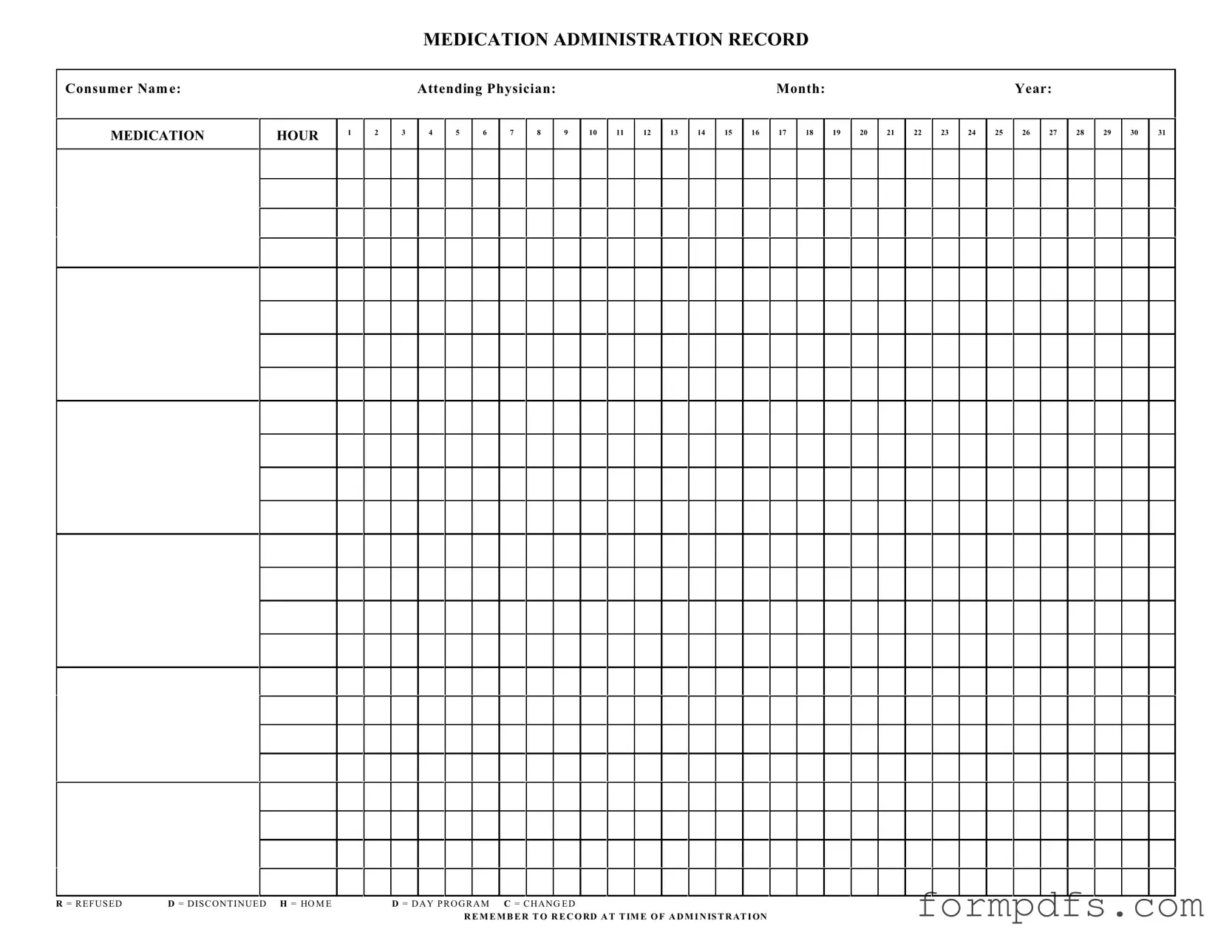What is the purpose of the Medication Administration Record Sheet?
The Medication Administration Record Sheet is designed to track the administration of medications to consumers. It ensures that healthcare providers have a clear and accurate record of what medications have been given, when they were administered, and any changes to the medication regimen.
Who should complete the Medication Administration Record Sheet?
The sheet should be completed by qualified healthcare professionals, such as nurses or caregivers, who are responsible for administering medications. It is essential that the person completing the form is familiar with the medications and the consumer’s health needs.
What information is required on the form?
The form requires the consumer's name, the attending physician's name, and the month and year of administration. Additionally, it includes a section for recording the time of administration, as well as columns for each hour of the day to indicate when medications are given or if they are refused, discontinued, or changed.
How should changes in medication be recorded?
If there is a change in the medication regimen, it should be indicated on the form by marking the appropriate box. The "C" for changed should be used to denote any modifications, ensuring that all changes are documented accurately for future reference.
What do the abbreviations R, D, H, and C mean?
These abbreviations stand for specific actions regarding medication administration. "R" means Refused, indicating that the consumer did not take the medication. "D" stands for Discontinued, meaning the medication is no longer being administered. "H" indicates that the medication was administered at home, and "C" signifies that there has been a change in the medication.
Why is it important to record the time of administration?
Recording the time of administration is crucial for ensuring that medications are given at the correct intervals. This practice helps prevent medication errors and ensures that the consumer receives the appropriate dosage at the right times, which is vital for their health and safety.
What should be done if a medication is refused?
If a consumer refuses medication, this should be clearly marked on the record with an "R" in the appropriate hour column. It is also important to document any reasons for the refusal and to communicate this information to the attending physician to assess the situation and determine any necessary follow-up actions.
Can the form be used for multiple consumers?
No, the Medication Administration Record Sheet is intended for use with a single consumer. Each consumer should have their own record sheet to maintain accurate and individualized medication administration records.
How often should the Medication Administration Record Sheet be updated?
The record sheet should be updated each time a medication is administered, refused, or changed. Regular updates ensure that the information remains current and accurate, which is essential for effective medication management and care.
